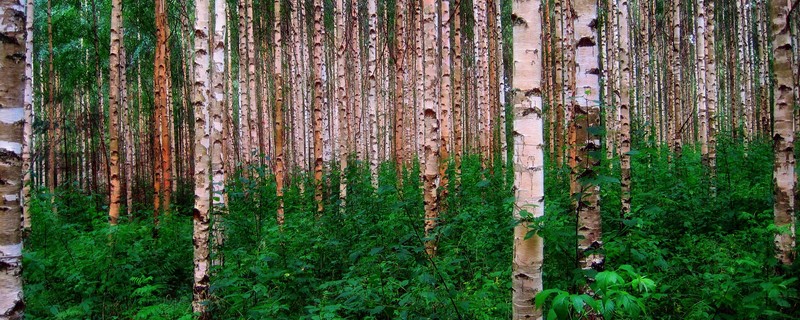New Urban Planting
This blog post is a little different from most of mine as the idea for it was sparked by two talks that I listened to at the recent Beth Chatto Symposium 2022 “Rewilding the Mind”. This was a wonderful two days of presentations and discussions across the topic of bringing nature back sustainably into urban environments for the benefit of the planet and local communities. And included a visit to the world renown Beth Chatto Gardens near Colchester in Essex, UK. As well as it being inspiring to spend two whole days thinking about 21st century gardening with 500 other knowledgeable enthusiasts, of course I learned a tonne of stuff particularly about urban planning and planting. So here are my first thoughts on a new style of urban community space planting and design, bearing in mind that this is not my special subject!
 If you conjure up an image of a city park or urban green space, or search the internet, it is likely that the picture will include quite a lot of mown grass, formal flower beds and, if it big enough one or more mature trees such as oak, lime or sycamore. Few spaces between buildings are dedicated to planting, let alone trees. But with the undeniable decline of wildlife across the UK and the huge number of people who rarely spend time in green spaces (18% in the year before the pandemic), it is time to bring nature back to our town and city centres. I can understand why anyone responsible for community spaces would be reluctant to plant trees – so often we see trees that have died within a year of being planted and there is always concern over damage to foundations and drains from tree roots. But by selecting tree species suited to the conditions and planting carefully with modern planting systems preventing compaction, waterlogging and interference with underground infrastructure, it is certainly possible to add trees and reap the benefits. One consideration that was new to me is where in the stages of tree colonisation a species falls and how this can play a part in the success of failure of a scheme; how pioneer species like Birch thrive in poor soil and exposed situations and subsequently provide soil improvement and shelter for less hardy trees to get established.
If you conjure up an image of a city park or urban green space, or search the internet, it is likely that the picture will include quite a lot of mown grass, formal flower beds and, if it big enough one or more mature trees such as oak, lime or sycamore. Few spaces between buildings are dedicated to planting, let alone trees. But with the undeniable decline of wildlife across the UK and the huge number of people who rarely spend time in green spaces (18% in the year before the pandemic), it is time to bring nature back to our town and city centres. I can understand why anyone responsible for community spaces would be reluctant to plant trees – so often we see trees that have died within a year of being planted and there is always concern over damage to foundations and drains from tree roots. But by selecting tree species suited to the conditions and planting carefully with modern planting systems preventing compaction, waterlogging and interference with underground infrastructure, it is certainly possible to add trees and reap the benefits. One consideration that was new to me is where in the stages of tree colonisation a species falls and how this can play a part in the success of failure of a scheme; how pioneer species like Birch thrive in poor soil and exposed situations and subsequently provide soil improvement and shelter for less hardy trees to get established.
Once we have a few viable trees in place, the next change is to underplant with a dense and layered mixture of hardy shrubs and perennials around them – without weed suppressant fabric – instead of gravel, wood chip or the usual collection of evergreen domes. Such varied planting will provide year round cover and food for wildlife as well as being more sustainable and lower maintenance in the end. UK native woodland plants that have evolved to thrive in the shade under deciduous trees are an obvious choice for survivability and wildlife value but often lack the visual impact that we want from managed spaces, after all no-one is pretending that an urban square is a piece of legacy countryside. One solution to this is to mix native plants and more ornamental close relative’ bred over time for larger flowers or a longer flowering season and also to plant more densely that would occur in nature. Finally in larger areas where there is space for people to gather and children to play, maybe it is time to change the default of what we imagine a ‘play area’ to be: lose the rubber matting and metal climbing frames in favour of a more natural environment. Let children chase around paths through tree and shrubs, climb on piles rocks, even climb (selected) trees.
Key findings in the 2019 Natural England survey Monitor of Engagement with the Natural Environment were that most visits to green spaces are undertaken on foot and lack of access to natural environments is a primary limiting factor. It also found that visits to more rural environments, rather than urban parks and recreation grounds, provided the highest levels of enjoyment, relaxation and feeling close to nature. This is the survey that revealed that 18% of adults still spend time in nature less than once a month or never, although happily this had declined over the ten years of the survey. Surely it really is time that urban green spaces resembled more natural landscapes, albeit created and managed ones. The benefits? Reduce the sense of separation and otherness between urban communities and the countryside, increase engagement with nature and a sense of connectedness to the natural environment, increased biodiversity, plus all the pollution and climate benefits of green plants and trees in built up areas and improvements to the overall wellbeing of the population. What’s not to like?
Happy Gardening from Alison
If you enjoyed reading this blog why not receive my monthly newsletter direct to your email inbox with blogs, video tips and seasonal articles to inspire and inform. Sign up HERE.
References and further information
With reference to the presentations by Giacomo Guzzon & Ton Muller and Errol Fernandes & Henrik Sjöman. Details of the symposium and speakers HERE
Natural England Results for the tenth year of the Monitor of Engagement with the Natural Environment survey, which provides data on how people use the natural environment in England HERE

